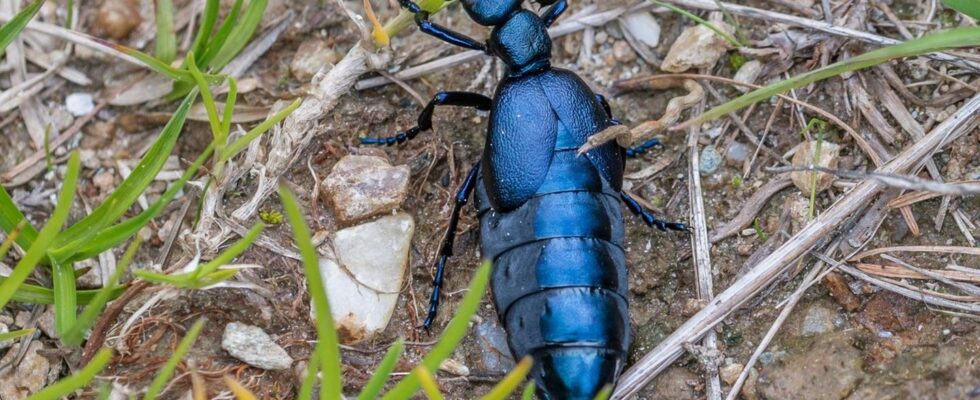The oil beetle
Its poison really is that dangerous
© stgrafix / Adobe Stock
The oil beetle is on everyone’s lips. This is probably due to the fact that they appear more frequently at the edges of meadows, especially in spring. The actually rather inconspicuous beetles are currently being given a dangerous image. How much truth is there to the poisonous crawler?
Yes, the blue-black oil beetle is poisonous. However, the likelihood of a human or animal dying from this toxin is very small – it’s more likely to be accidentally stepped on or killed by man-made environmental problems. According to the Nature Conservation Union (NABU), neither human nor animal poisoning is known. Nevertheless, they also warn against exercising caution when observing.
The oil beetle grows up to three centimeters long
The bluish shimmering beetles are one to three centimeters long and are characterized by their slightly too short wings. The females are significantly larger than the males – especially when the eggs develop, the abdomen swells again, so that the animals can then have a length of up to 3.5 centimeters.
But how poisonous is the oil beetle? 20 species of the oil beetle live in Central Europe. In Germany, mostly the black-blue oil beetle or the very similar looking violet oil beetle is sighted. All representatives of this genus have one thing in common: Cantharidin – a natural poison. This is also toxic for humans, but only from a very high dose. NABU gives the all-clear here, too: Even those who swallow an oil beetle will generally not die from it.
The poison of the oil beetle was formerly used as a sexual enhancer
In ancient times, the poison – which the Spanish fly also produces – was used as a remedy on the one hand, but also for executions on the other. For example, it was said to have a potency-enhancing effect, but this could never be scientifically proven.
The poison is excreted on the knees of the oil beetle and is used purely to ward off predators. As the name suggests, the beetle is covered in this poison and therefore looks as if it has been coated with oil.
The basic rule is: do not touch insects, just observe them
Basically, wild animals and insects can be observed, but should not be touched. Touching the oil beetle can lead to skin irritation, among other things. It is therefore important to ensure that children in particular leave the little crawlers alone and do not pick them up. They are best observed from a little distance. Be careful with your pets. Dogs in particular tend to want to chase and eat crawling things. In most federal states, leashes are currently mandatory in the forest due to the breeding and settling season. In general, however, care should also be taken with the four-legged friends that they leave insects alone – mainly for self-protection. Anyone who has come into contact with an oil beetle should wash their hands thoroughly afterwards.
The oil beetle is currently considered endangered and has long been on the Red List of Threatened Species. Therefore it is forbidden to kill him.
Sources used: nabu.de, br.de, mdr.de
